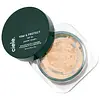What's inside
What's inside
 Key Ingredients
Key Ingredients

 Benefits
Benefits

 Concerns
Concerns

 Ingredients Side-by-side
Ingredients Side-by-side

Talc
AbrasiveMica
Cosmetic ColorantSilica
AbrasivePolymethylsilsesquioxane
Ethylhexyl Methoxycinnamate
UV AbsorberTitanium Dioxide
Cosmetic ColorantAmodimethicone
Polymethyl Methacrylate
Dimethicone/Vinyl Dimethicone Crosspolymer
Skin ConditioningCyclopentasiloxane
EmollientSodium Dehydroacetate
PreservativeTriethoxycaprylylsilane
Tocopheryl Acetate
AntioxidantAluminum Hydroxide
EmollientBHT
AntioxidantAlumina
AbrasiveParfum
MaskingGlycerin
HumectantDimethiconol
EmollientPrunus Persica Flower Extract
MoisturisingIsoceteth-10
EmulsifyingTalc, Mica, Silica, Polymethylsilsesquioxane, Ethylhexyl Methoxycinnamate, Titanium Dioxide, Amodimethicone, Polymethyl Methacrylate, Dimethicone/Vinyl Dimethicone Crosspolymer, Cyclopentasiloxane, Sodium Dehydroacetate, Triethoxycaprylylsilane, Tocopheryl Acetate, Aluminum Hydroxide, BHT, Alumina, Parfum, Glycerin, Dimethiconol, Prunus Persica Flower Extract, Isoceteth-10
Titanium Dioxide 12.5%
Cosmetic ColorantZinc Oxide 22.5%
Cosmetic ColorantDimethicone/Vinyl Dimethicone Crosspolymer
Skin ConditioningMica
Cosmetic ColorantPolymethylsilsesquioxane
Calcium Sodium Borosilicate
Butyloctyl Salicylate
Skin ConditioningTridecyl Salicylate
Skin ConditioningNiacinamide
SmoothingSilica
AbrasiveIsodecyl Salicylate
Skin ConditioningOctyldodecanol
EmollientDimethicone
EmollientIsoceteth-10
EmulsifyingIron Oxides
Phenylpropanol
MaskingPropanediol
SolventPhysalis Angulata Extract
Skin ProtectingCaprylic/Capric Triglyceride
MaskingMethicone
EmollientCaprylyl Glycol
EmollientTocopherol
AntioxidantTitanium Dioxide 12.5%, Zinc Oxide 22.5%, Dimethicone/Vinyl Dimethicone Crosspolymer, Mica, Polymethylsilsesquioxane, Calcium Sodium Borosilicate, Butyloctyl Salicylate, Tridecyl Salicylate, Niacinamide, Silica, Isodecyl Salicylate, Octyldodecanol, Dimethicone, Isoceteth-10, Iron Oxides, Phenylpropanol, Propanediol, Physalis Angulata Extract, Caprylic/Capric Triglyceride, Methicone, Caprylyl Glycol, Tocopherol
Ingredients Explained
These ingredients are found in both products.
Ingredients higher up in an ingredient list are typically present in a larger amount.
This ingredient is a silicone used to improve the texture of products and absorb oil. It does not get absorbed into the skin.
Like other silicones, Dimethicone/Vinyl Dimethicone Crosspolymer helps condition the skin by creating a barrier. In this sense, it can act as an emollient and trap moisture in.
This ingredient is a type of elastomer.
Learn more about Dimethicone/Vinyl Dimethicone CrosspolymerWe don't have a description for Isoceteth-10 yet.
Mica is a naturally occurring mineral used to add shimmer and color in cosmetics. It can also help improve the texture of a product or give it an opaque, white/silver color.
Serecite is the name for very fine but ragged grains of mica.
This ingredient is often coated with metal oxides like titanium dioxide. Trace amounts of heavy metals may be found in mica, but these metals are not harmful in our personal products.
Mica has been used since prehistoric times throughout the world. Ancient Egyptian, Indian, Greek, Roman, Aztec, and Chinese civilizations have used mica.
Learn more about MicaPolymethylsilsesquioxane is a silicone used as a film forming agent.
When applied to the skin, this ingredient creates an invisible film on the surface. This film still allows oxygen to pass through, but prevents moisture from escaping. This can help condition and hydrate the skin. It also leaves a silky feel when applied.
Polymethylsilsesquioxane has not been shown to clog pores. It has been deemed safe to use up to 55%, but most cosmetics use much less.
If you have concerns about using this ingredient, we recommend speaking with a professional.
Learn more about PolymethylsilsesquioxaneSilica, also known as silicon dioxide, is a naturally occurring mineral. It is used as a fine, spherical, and porous powder in cosmetics.
Though it has exfoliant properties, the function of silica varies depending on the product.
The unique structure of silica enhances the spreadability and adds smoothness, making it a great texture enhancer.
It is also used as an active carrier, emulsifier, and mattifier due to its ability to absorb excess oil.
In some products, tiny microneedles called spicules are made from silica or hydrolyzed sponge. When you rub them in, they lightly polish away dead skin layers and enhance the penetration of active ingredients.
Learn more about SilicaTitanium dioxide is a mineral UV filter widely used in sunscreens and cosmetics.
It is one of only two UV filters officially classified as “mineral” by regulatory agencies, the other being zinc oxide.
Titanium dioxide provides broad-spectrum protection mostly in the UVB and UVAII range, with some protection in the UVAI range.
While its UVA protection isn’t as strong as zinc oxide’s, the difference is minor.
A common myth is that mineral UV filters reflect UV light. However, modern research shows titanium dioxide absorbs UV radiation like chemical filters (~95% absorption & 5% reflection).
Thanks to its non-irritating nature, titanium dioxide is suitable for sensitive, acne-prone, or redness-prone skin. It is unlikely to cause "eye sting" like other sunscreen ingredients.
A major drawback of this ingredient is its white cast and thick texture. This is why mineral sunscreens often leave a white cast and are less cosmetically elegant than chemical/hybrid sunscreens.
To improve white cast and spreadability, micronized or nano-sized titanium dioxide is often used.
There are ongoing concerns surrounding nano-titanium oxide's impact on marine ecosystems.
There is no conclusive evidence that any form of titanium oxide (or any other sunscreen ingredients) will cause harm to marine ecosystems or coral reefs. The science is still developing but many consumers are keeping a close eye on this issue.
Please note, many destinations have reef-safety sunscreen rules. For instance, the U.S. Virgin Islands advises all visitors to use non-nano mineral sunscreens.
Nano mineral sunscreens once raised safety concerns about absorption into skin.
Extensive research has shown that they do not penetrate healthy or damaged skin; they remain safely on the surface and the top layer of dead skin (stratum corneum).
You'll likely find titanium dioxide bundled with alumina, silica, or dimethicone. These ingredients help make titanium dioxide highly photostable; this prevents it from interacting with other formula components under UV light.
Learn more about Titanium Dioxide